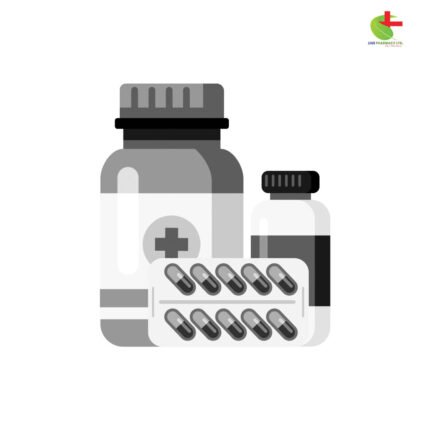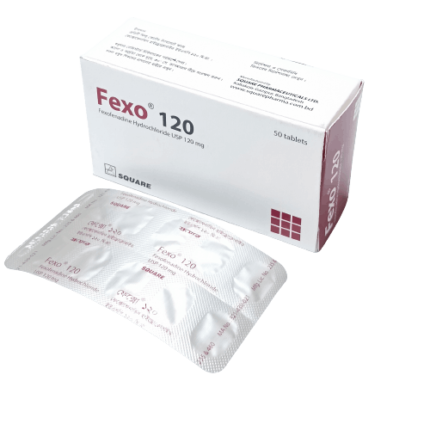Procef Drop
50.00৳ Bottle (15ml)
- Procef is a broad-spectrum bactericidal antibiotic effective against various Gram-positive and Gram-negative bacteria.
- It treats infections such as upper and lower respiratory tract infections, urinary tract infections, and skin and soft tissue infections.
- Containing Cephradine, it works by disrupting bacterial cell wall synthesis, leading to cell lysis.
- Procef is available in both oral and injectable forms, suitable for adults and children, with dosing adjustments for renal impairment.
- Always use under the guidance of a registered healthcare professional.
 Brand
Brand
|
Incepta Pharmaceuticals Ltd |
|---|---|
 Generics
Generics
|
Cephradine |
 Type
Type
|
Pediatric Drops |
Indications
Procef is prescribed for the effective treatment of infections caused by susceptible Gram-positive and Gram-negative bacteria, including:
- Upper Respiratory Tract Infections: Such as sinusitis, pharyngitis, tonsillitis, laryngotracheobronchitis, and otitis media.
- Lower Respiratory Tract Infections: Including both acute and chronic bronchitis, lobar pneumonia, and bronchopneumonia.
- Urinary Tract Infections: Such as cystitis, urethritis, and pyelonephritis.
- Skin and Soft Tissue Infections: Including abscesses, cellulitis, furunculosis, and impetigo.
The following microorganisms have shown susceptibility in vitro to Procef:
- Gram-positive Bacteria: Staphylococci (including both penicillin-sensitive and resistant strains, as well as penicillinase-producing species), Streptococci, beta-hemolytic Streptococcus pyogenes, and Streptococcus pneumoniae.
- Gram-negative Bacteria: Escherichia coli, Klebsiella spp., Proteus mirabilis, Haemophilus influenzae, Shigella spp., Salmonella spp. (including Salmonella typhi), and Neisseria spp. Notably, many strains of E. coli and Staphylococcus aureus that produce the enzyme penicillinase and are resistant to ampicillin remain susceptible to Procef, which is unaffected by this enzyme.
Always follow the advice of a registered healthcare professional when using this medication.
Pharmacology
Cephradine is a semisynthetic, broad-spectrum bactericidal antibiotic that effectively combats infections caused by both Gram-positive and Gram-negative microorganisms. It is effective against both penicillinase-producing and non-producing strains of staphylococci. The primary mechanism of action for Cephradine is its ability to disrupt the bacterial cell wall, which contains peptidoglycan. By inhibiting the cross-linking process, Cephradine leads to the formation of porous cell walls, resulting in bacterial lysis due to external osmotic pressure.
Dosage & Administration
Oral Administration:
Adults:
- Urinary Tract Infections: 500 mg four times daily or 1 g twice daily. Severe or chronic infections may require higher doses, especially for complications like prostatitis and epididymitis.
- Respiratory Tract Infections: 250 mg to 500 mg four times daily or 500 mg to 1 g twice daily, depending on the infection’s site and severity.
- Skin and Soft Tissue Infections: 250 mg to 500 mg four times daily or 500 mg to 1 g twice daily, based on the site and severity.
Children:
- The total daily dosage should range from 25 to 50 mg/kg, administered in two to four equally divided doses.
- For otitis media, the total daily dose is 75 to 100 mg/kg, divided into doses every 6 to 12 hours.
- The maximum daily dosage should not exceed 4 g.
Elderly: Standard adult dosages are generally appropriate, but patients with renal or hepatic impairment should be monitored closely during treatment.
Injectable Administration:
Adults: The typical dosage is 2-4 g daily, divided into four doses, with a maximum of 8 g daily. For prophylaxis, a single preoperative dose of 1-2 g may be administered intramuscularly or intravenously.
Children: Administer 50-100 mg/kg daily, divided into four doses, with a maximum of 300 mg/kg daily for severe infections.
Always follow the advice of a registered healthcare professional when using this medication.
Interaction
Caution should be exercised when using Cephradine alongside nephrotoxic drugs like aminoglycosides, as this may heighten the risk of kidney damage. Concurrent use of diuretics (e.g., furosemide, ethacrynic acid) and probenecid can also increase renal toxicity.
Contraindications
Cephradine should be avoided in individuals with known or suspected hypersensitivity to cephalosporins.
Side Effects
The most commonly reported side effects are gastrointestinal disturbances and, occasionally, hypersensitivity reactions. Individuals with a history of allergy, asthma, hay fever, or urticaria are at a greater risk. Rare side effects include glossitis, heartburn, dizziness, chest tightness, nausea, vomiting, diarrhea, abdominal pain, vaginitis, and Candida overgrowth. Skin and hypersensitivity reactions can manifest as urticaria, rashes, joint pain, and edema.
- Blood and Lymphatic Disorders: Potential blood disorders may occur, including thrombocytopenia, leukopenia, agranulocytosis, aplastic anemia, and hemolytic anemia.
- Immune System Disorders: Unknown incidences of fever, serum sickness-like reactions, and anaphylaxis.
- Nervous System Disorders: Confusion, sleep disturbances, hyperactivity, dizziness, and, rarely, headaches.
- Hepatobiliary Disorders: Liver enzyme disturbances and transient hepatitis have been reported.
- Renal and Urinary Disorders: Reversible interstitial nephritis may occur.
- Investigations: Potential elevations in blood urea nitrogen, serum creatinine, alanine aminotransferase, aspartate aminotransferase, total bilirubin, and alkaline phosphatase.
Pregnancy & Lactation
While animal studies have shown no teratogenic effects, the safety of Cephradine during pregnancy has not been established. The drug is excreted in breast milk and should be used cautiously by lactating mothers. Patients should also be warned about the potential for dizziness when operating machinery or vehicles.
Precautions & Warnings
- Prolonged use of this antibiotic may lead to superinfections due to resistant organisms.
- Care should be taken when administering Procef to patients with a known sensitivity to penicillins due to possible cross-reactivity with beta-lactam antibiotics.
- Cephalosporin antibiotics may yield a false-positive result in Coombs’ testing. Neonates whose mothers received cephalosporins prior to delivery should be evaluated accordingly.
- Procef may cause false-positive urine glucose tests when using Benedict’s or Fehling’s solutions. This does not apply to enzyme-based tests (e.g., Clinistix, Diastix).
- Adjustments in dosage are necessary for patients with renal impairment.
- Procef contains lactose and should be avoided by individuals with rare hereditary galactose intolerance, Lapp lactase deficiency, or glucose-galactose malabsorption.
Use in Special Populations
Renal Impairment: Recommended doses for patients not on hemodialysis (based on 500 mg every 6 hours) are as follows:
- CrCl >20 ml/min: 500 mg every 6 hours
- CrCl 5-20 ml/min: 250 mg every 6 hours
- CrCl <5 ml/min: 250 mg every 50-70 hours
For patients on chronic, intermittent hemodialysis:
- 250 mg at the start of hemodialysis
- 250 mg 6 to 12 hours after the start
- 250 mg 36 to 48 hours after the start
- 250 mg at the beginning of the next hemodialysis session if more than 30 hours have passed since the last dose.
Additional Information
Regardless of age or weight, higher doses of up to 1 g four times daily may be necessary for chronic or severe infections. Treatment should continue for at least 2-3 days after symptoms have resolved or bacteria have been eliminated. To prevent rheumatic fever or glomerulonephritis due to infections from hemolytic streptococci, treatment should last at least 10 days. Ongoing clinical and bacteriological monitoring is essential for chronic urinary tract infections during treatment and for several months thereafter.
Doses below those recommended should not be prescribed, and pediatric dosages should not exceed adult specifications, regardless of infection severity. Persistent infections may require prolonged Procef therapy. Patients may transition from intramuscular/intravenous Procef therapy to oral treatment at the same dosage level.
Overdose Effects
Symptoms of Cephradine overdose are generally non-specific, including nausea, vomiting, diarrhea, and gastrointestinal disturbances. Supportive treatment is primarily recommended, though gastric lavage may be required if a significant amount has been ingested.
Therapeutic Class
Procef belongs to the first-generation cephalosporins.
Storage Conditions
Procef Suspension should be freshly prepared. The reconstituted suspension is valid for use within 7 days at room temperature or 14 days if refrigerated. Procef Injection solutions should be utilized within 2 hours at room temperature. At 5°C, solutions maintain potency for 12 hours. Reconstituted solutions may vary in color from light to straw yellow without affecting potency. Do not use beyond the expiration date. Keep all medications out of children’s reach and dispense only on a registered physician’s prescription.













Reviews
There are no reviews yet.